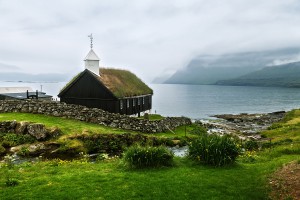The current COVID-19 crisis has elevated the question about how organizations should be funded to market destinations, particularly in the U.S. Typically, destination marketing organizations (DMOs, sometimes called Convention & Visitors Bureaus) are funded through an accommodations or occupancy tax – an amount added to each visitor’s stay at a recognized lodging property (hotel, motel, Airbnb, VRBO, cabin, etc.) that is collected by state revenue offices and then dispersed back to the destination’s county or city for allocation of funds to a designated DMO.
As much of the world continues to shelter at home, many DMOs are turning their attention inward – to help support local businesses and the non-profit organizations that operate museums, historic sites and cultural venues. Why? Without these restaurants, shops, and attractions, the DMO will have little to market. And even less for visitors to enjoy, and patronize with their spending.
Yet this is also a great opportunity for a reset. New models of funding, stewardship and marketing can help visitors – and residents – find a balance between the community and tourism. This was – and still is – one of the fundamental principles of heritage tourism, and is as relevant today as it was then. Months ago, before COVID-19, the rallying cry of “overtourism” was heard as many governments berated the crowds of visitors that jeopardized sense of place. Today, we recognize how important tourism can be to an economy … but also its impact on the environment.
When I worked at National Geographic, the Faroe Islands was always held up as a model example of good resource stewardship. This set of volcanic islands shut down its popular attractions during a pilot program, inviting visitors to apply for the opportunity to assist with conservation and preservation projects. A way to engage the very people who appreciate the sites in the stewardship of these resources. This pro-active tourism management strategy has not hindered the appeal of the Faroe Islands. In many respects, it has elevated its cache as a place dedicated to preserving and conserving what makes the destination so special. Last weekend was planned as another “closure” but the COVID-19 crisis escalated this timeline, and provided a forced reset for destinations around the globe.
Sustainable tourism management relies on destinations understanding their carrying capacity (how many people can engage in a given activity without compromising the resource or the experience) and establishing controls to help manage the flow of participants. DMOs often describe this as “delivering on the brand promise” – where reality exceeds perception. However, the delivery of experience extends beyond the influence and control of the DMO. Local government has a responsibility in tourism management in the form of litter control, parking, and safety ordinances. Private businesses also have a stake in delivering positive experiences, most significantly in the quality of hosting visitors. Preservation and conservation organizations influence the aesthetics of place through design guidelines, density controls, protection of open space, and restoration of historic buildings. Only when destination stakeholders – public and private – work together can tourism management be pro-active and ensure the positive delivery of a brand promise. Perhaps if the COVID-19 crisis has taught us one thing, it perhaps is that we are all in this together.
– Cheryl Hargrove, updated April 2020

